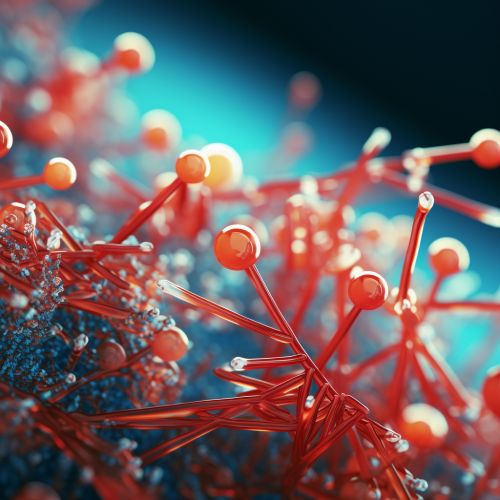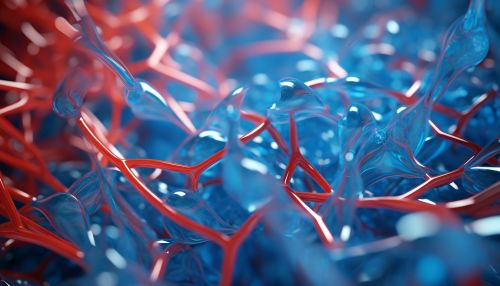Nitrogenase
Introduction
Nitrogenase is an enzyme complex found in certain bacteria and archaea. This enzyme is responsible for the biological process of nitrogen fixation, which is the conversion of atmospheric nitrogen (N2) into a form that can be used by living organisms. Nitrogenase is a complex and highly regulated enzyme, and its study is a key area of research in the field of biochemistry.


Structure and Composition
The nitrogenase enzyme complex is composed of two main components: the MoFe protein and the Fe protein. The MoFe protein, also known as the molybdenum-iron protein, is a dimer with each monomer consisting of an α and β subunit. The Fe protein, or iron protein, is a homodimer with each monomer consisting of a single polypeptide chain.
The MoFe protein contains two types of metalloclusters: the P-cluster and the M-cluster. The P-cluster is located at the α-β subunit interface and is involved in electron transfer from the Fe protein to the M-cluster. The M-cluster is the site of nitrogen reduction and is located deep within the α subunit.
The Fe protein contains a single [4Fe-4S] cluster and binds ATP. It is responsible for transferring electrons to the MoFe protein during nitrogen fixation.
Mechanism of Action
The mechanism of nitrogenase is complex and not fully understood. However, it is known that the enzyme operates through a series of electron transfer steps. The Fe protein, in its reduced state, binds ATP and forms a complex with the MoFe protein. This triggers the transfer of one electron from the Fe protein to the MoFe protein, reducing the P-cluster and subsequently the M-cluster.
The M-cluster, now in a reduced state, binds and reduces atmospheric nitrogen to ammonia. This process requires a total of eight electrons and eight protons, as well as the hydrolysis of 16 ATP molecules. The exact sequence of events and the intermediates formed during nitrogen reduction are still areas of active research.
Regulation
The activity of nitrogenase is tightly regulated at both the transcriptional and post-translational levels. At the transcriptional level, the genes encoding the nitrogenase components are part of the nif regulon, which is controlled by the NifA and NifL proteins in response to nitrogen and oxygen levels.
Post-translational regulation of nitrogenase involves the reversible ADP-ribosylation of the Fe protein by the DraT and DraG proteins. This modification inhibits the ATPase activity of the Fe protein, effectively shutting down nitrogenase activity when ammonium levels are high.
Biological Significance
Nitrogenase is of great biological significance due to its role in nitrogen fixation. Nitrogen is a crucial element for life, as it is a component of amino acids, proteins, and nucleic acids. However, atmospheric nitrogen is largely inaccessible to most organisms due to its strong triple bond. Nitrogenase, by converting atmospheric nitrogen to ammonia, plays a key role in the nitrogen cycle and allows for the utilization of this essential nutrient.
